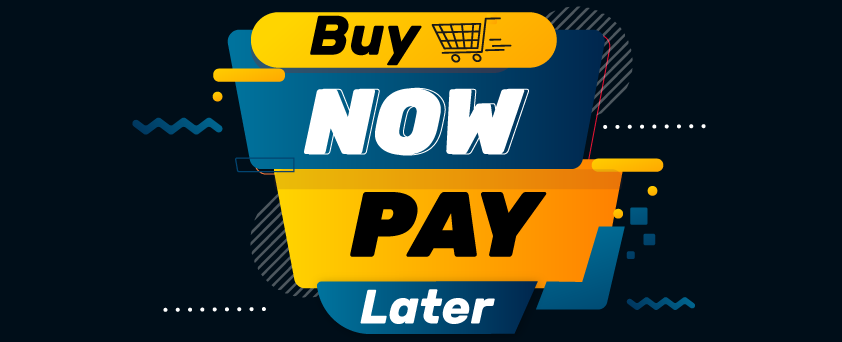In today’s fast-paced business environment, maintaining a healthy cash flow is crucial for companies of all sizes. The right payment options can play a significant role in achieving this, and two popular choices in the B2B payment options are BNPL (Buy Now, Pay Later) and Net 30. BNPL, once a consumer-focused disruptor, has made a splash in B2B transactions, offering businesses the flexibility to delay payments.
Meanwhile, Net 30 remains a trusted standard, providing a 30-day period to settle invoices. Both options have distinct advantages and cater to different needs, making it essential for businesses to understand how each can impact their finances and operations.
BNPL in B2B Payment Options
 Image courtesy: Unsplash
Image courtesy: Unsplash
What Fuels BNPL’s Growth?
The growth of BNPL (Buy Now, Pay Later) in the B2B payment options is being propelled by several factors that align seamlessly with modern business needs. Let’s dig into these:
– Cash Flow Optimization: Businesses are constantly seeking ways to manage their cash flow more effectively. BNPL enables companies to acquire essential goods and services while delaying payment, ensuring that their working capital remains intact. This flexibility can be a game-changer for small to medium-sized enterprises that operate on tight budgets.
– Consumerization of B2B: As consumers, we’ve grown accustomed to having options. Whether it’s subscribing to monthly payments for a streaming service or buying a phone in installments, we love flexibility. Businesses are not far behind and expect similar convenience in their transactions. BNPL answers this demand by offering a user-friendly, flexible payment option that aligns with modern expectations.
– E-commerce Surge: The explosive growth of e-commerce in the B2B sector has provided fertile ground for BNPL integration. Companies are eager for quick, seamless checkout experiences, and BNPL fits the bill perfectly by allowing purchases without the immediate cash outlay.
– Access to Credit: Traditional financing options can be difficult to secure, especially for newer or smaller businesses. BNPL opens doors to credit opportunities that might otherwise remain closed, enabling businesses to expand without the usual financial hurdles.
How BNPL Works in B2B Payment Options
Understanding how BNPL functions in the B2B payment options is crucial before opting for this payment method. Here’s a breakdown of the mechanics:
– Installment Plans: BNPL typically offers payment plans that are spread over time, often without interest or additional fees as long as payments are timely. This approach reduces the pressure of hefty upfront payments, making it easier for businesses to budget and plan.
– Supplier Partnerships: Some BNPL platforms have formed partnerships with suppliers, embedding financing options directly at the point of sale. This not only simplifies the purchasing process but often encourages larger order volumes due to the payment flexibility.
– Credit Line Integration: In some cases, BNPL is integrated with existing business credit lines, offering more adaptability. Businesses can utilize their established credit lines, repaying in sections, thus smoothing out cash flow and financial planning.
BNPL’s Potential in B2B
The potential of BNPL in the B2B realm goes beyond just a method of delayed payment—it could be transformative. Here’s how:
– Improved Cash Flow: By leveraging BNPL, businesses can preserve their capital for other critical investments or unexpected expenses, effectively optimizing their cash flow for better financial health.
– Increased Sales: Offering flexible payment terms can attract a broader clientele and potentially boost sales, as businesses are more inclined to place larger orders when upfront payment is not a constraint.
– Enhanced Supplier Relationships: BNPL can strengthen ties with suppliers by ensuring they receive payment promptly, while also providing customers with flexible terms that benefit both parties.
Net 30 Basics
Net 30 has been a staple in B2B transactions, offering a more traditional approach to payment obligations. Here’s a closer look:
The Benefits of Net 30
The advantages of Net 30 payment terms have contributed to its longevity as a favored option in business transactions. Benefits include:
– Cash Flow Management: By granting businesses a 30-day period to settle their invoices, Net 30 allows them to generate revenue from their sales before having to pay for their received goods or services. This grace period can alleviate immediate financial pressure.
– Supplier Relationships: Opting for Net 30 terms can signal trust and stability between businesses and their suppliers. This mutual confidence can lead to healthier, more productive business relationships.
– Credit Building: Consistent, timely payments of Net 30 invoices can help establish a solid business credit history. This is crucial for securing larger purchases and more favorable terms in the future.
Net 30 in Practice
Putting Net 30 into practice involves understanding a few key elements:
– Invoice Terms: Suppliers typically specify Net 30 in their invoicing, clearly outlining the due date for payment, which helps both parties manage expectations and maintain transparent communication.
– Creditworthiness: Before extending Net 30 terms, suppliers often perform credit checks to gauge a buyer’s reliability in meeting payment obligations. This step is essential to mitigate risks of non-payment.
– Late Payments: Failing to meet the 30-day deadline can strain relationships with suppliers and dent your business’s credit standing, so timely payments are essential for maintaining trust and creditworthiness.
When deliberating between BNPL and Net 30, businesses must weigh numerous considerations. Understanding the costs, the impact on cash flow, supplier dynamics, and credit ramifications is key. Tailoring the option to reflect the specific needs and strategic goals of your organization will help leverage these payment solutions effectively, ultimately supporting sustainable growth and financial stability.
How to Choose the Right Payment Option for Your Business?
To choose the best B2B payment option between BNPL and Net 30, consider your business’ needs and priorities, such as costs, cash flow requirements, and supplier relationships.
Cost Considerations
When it comes to cost, BNPL often appears enticing due to its flexibility. Many BNPL providers offer interest-free periods or installment plans without fees—if you pay on time. However, missing a payment or opting for longer terms might introduce additional costs or fees.
On the flip side, Net 30 generally doesn’t involve direct costs like interest charges. However, taking advantage of Net 30 credit can mean missing out on early-payment discounts offered by suppliers, which could potentially save money if cash flow allows for early payment.
Cash Flow Needs
Effective cash flow management is crucial for any business, determining not just survival but potential growth. BNPL is particularly appealing for companies aiming to enhance cash flow flexibility. By spreading out payments, companies can better manage large expenses without depleting their immediate cash reserves.
Net 30 terms also help in cash flow management by giving businesses a 30-day window to settle payments. This is beneficial for aligning outflows with inflows, especially when sales revenue can cover upcoming expenses.
Supplier Relationships
Your choice between BNPL and Net 30 can also impact relationships with your suppliers. BNPL solutions often involve collaboration with suppliers at the point of purchase, which can simplify transactions and potentially foster larger orders. This encourages positive supply chain dynamics since suppliers receive payments processed through a BNPL service.
Net 30 can be seen as a trust-building mechanism between businesses. It reflects a strong relationship where suppliers believe in the buyer’s ability to meet payment obligations within 30 days. However, frequent reliance on such terms can strain relations if payments are occasionally delayed.
Credit Impact
Building and maintaining a good credit history is essential for business. BNPL can offer access to credit without the rigid requirements of traditional lending, which might be suitable for companies with limited credit histories. Yet, missing BNPL payments can adversely affect your credit rating.
Conversely, Net 30 terms can assist in fortifying your credit profile. Regular, timely payments contribute positively to business credit scores—an invaluable asset when seeking larger credit lines or business loans in the future. However, late payments can have the opposite effect, damaging credit scores and future credit opportunities.
Choosing between BNPL and Net 30 requires careful analysis of your business’s specific situation. Each option brings its own set of advantages, and evaluating your needs, from cost to credit impacts, will guide you to make the best decision for your fiscal strategy and relationships.
Conclusion
In the ever-evolving realm of B2B payments options, BNPL and Net 30 stand out as reliable strategies for managing cash flow and nurturing supplier relationships.
Each option offers distinct advantages—BNPL providing quick access to necessary resources without immediate payment, and Net 30 fostering trust and stability in supplier interactions through more traditional means.
Businesses now face the exciting potential of blending these into hybrid models that offer greater flexibility and control over cash flow.
Making the right choice involves a deep understanding of your business needs and objectives. Consider factors like cost, cash flow demands, and the potential impact on your business credit and supplier rapport. Ultimately, the decision should not only facilitate growth and operational success but also set the groundwork for sustainable, long-term success in your financial strategy.









